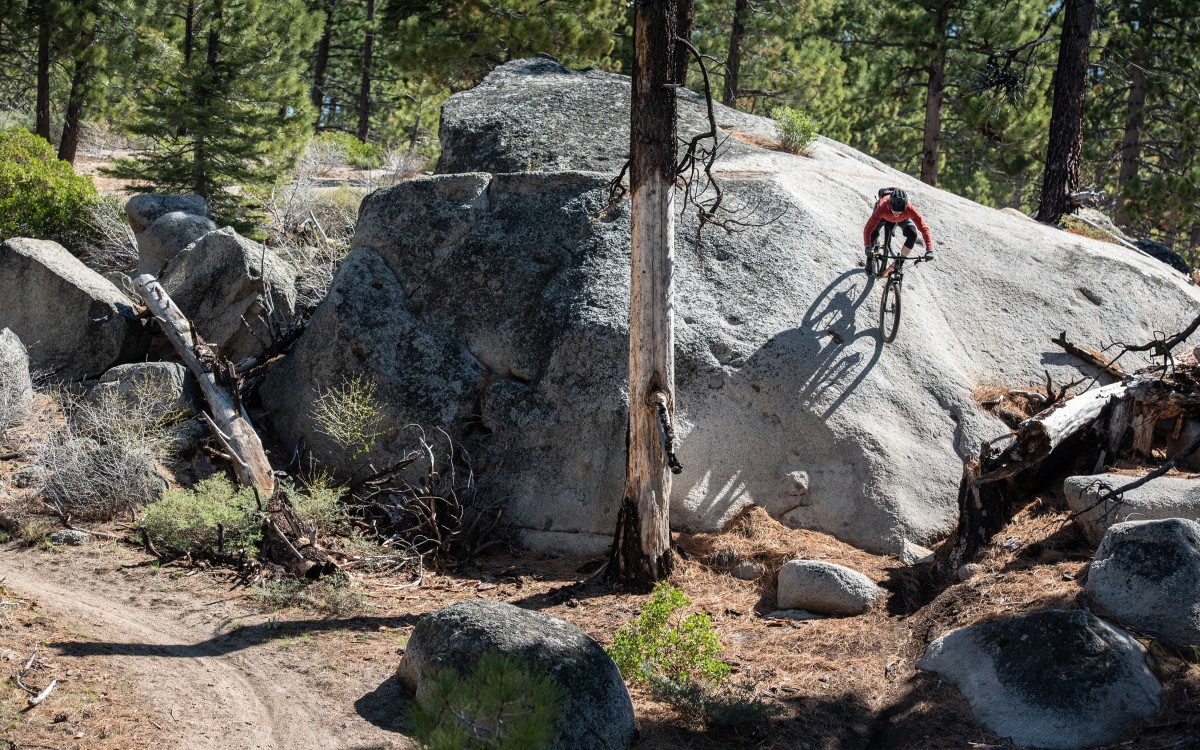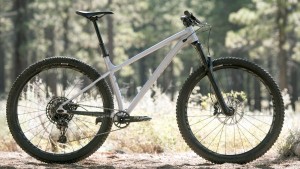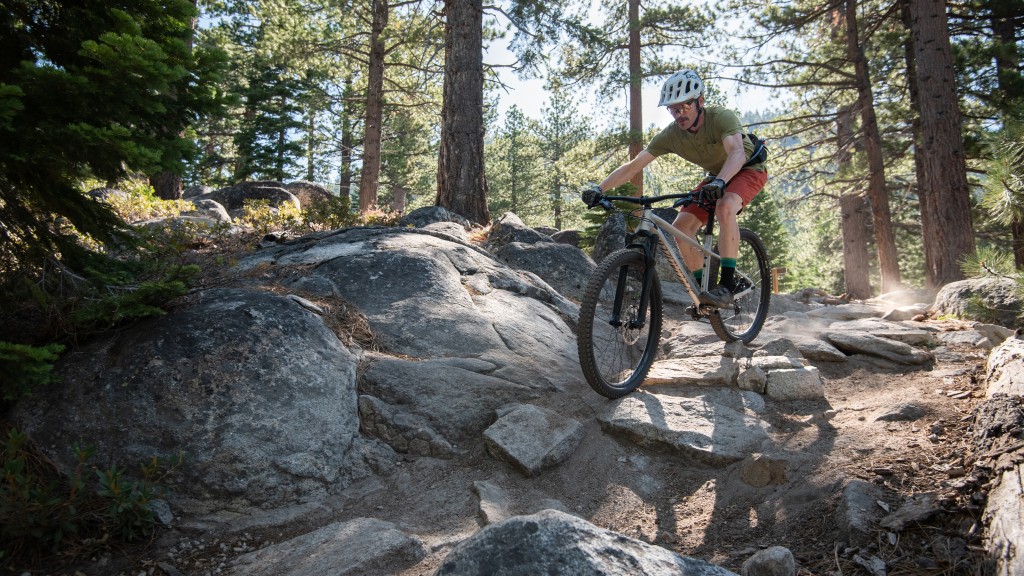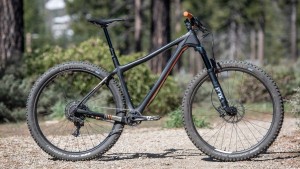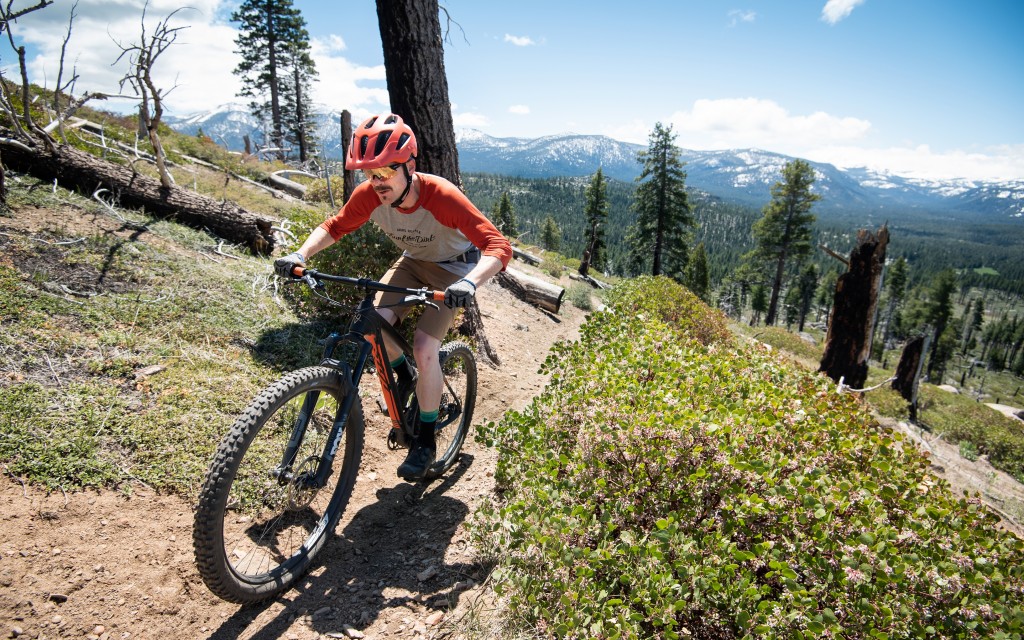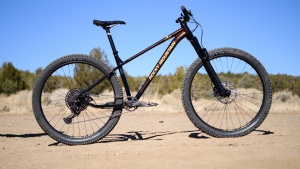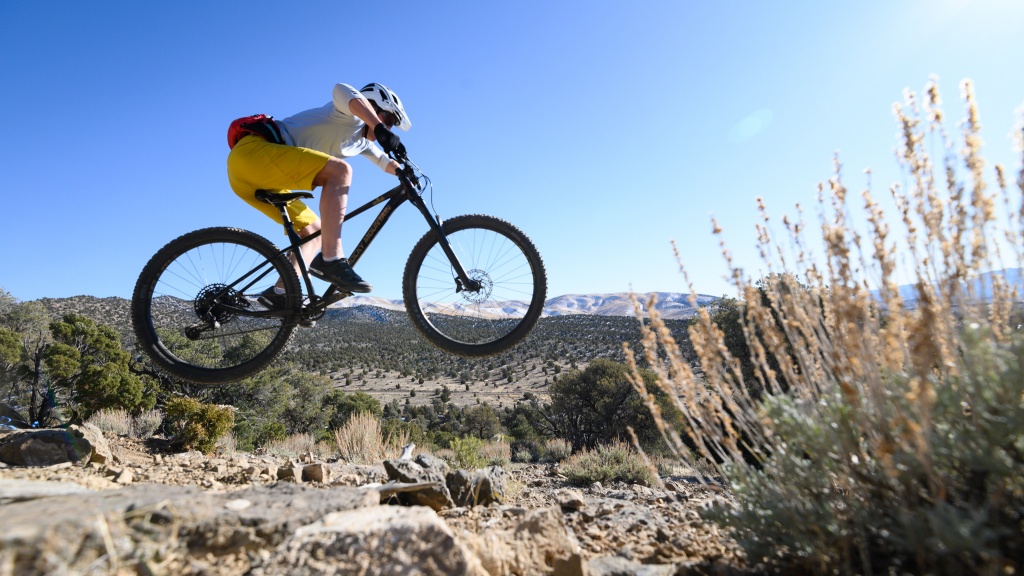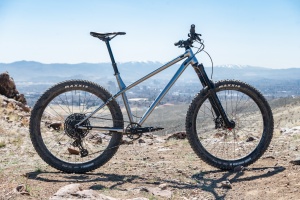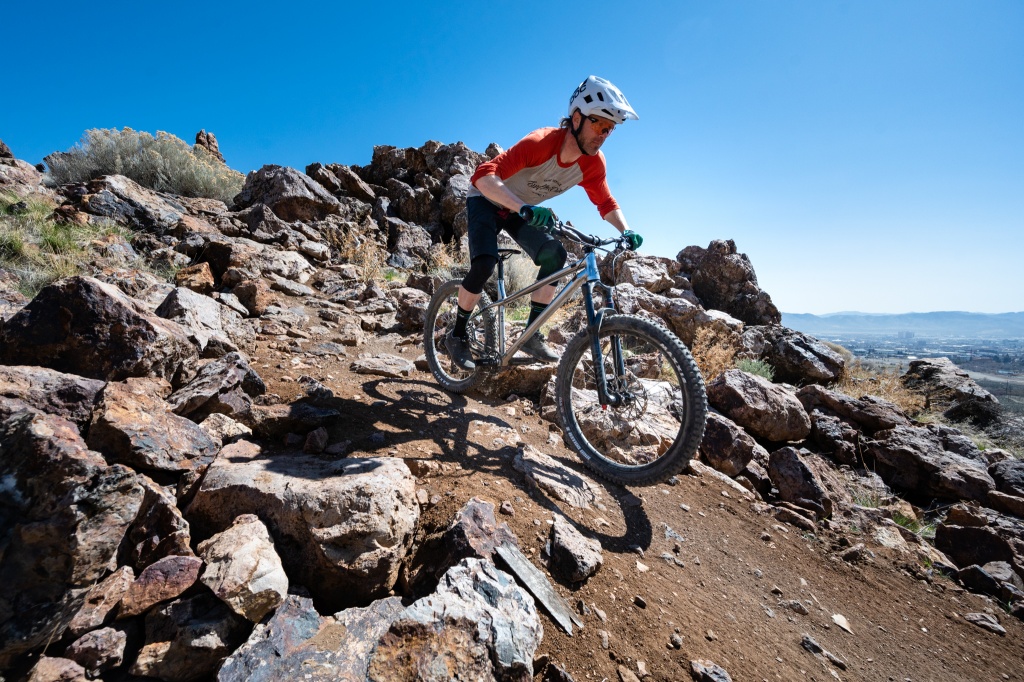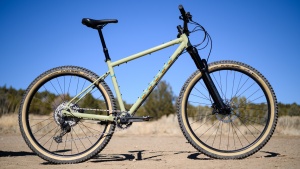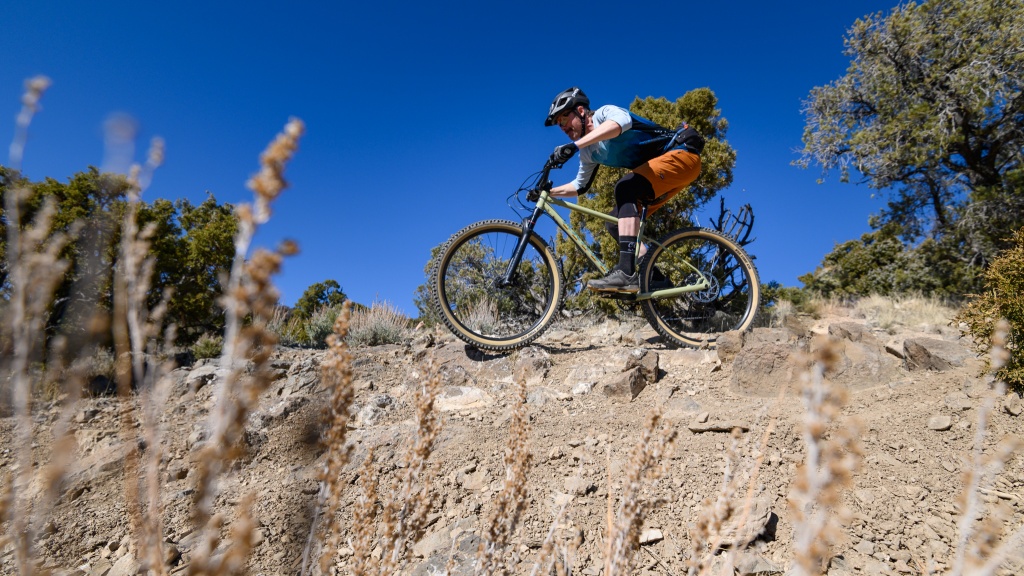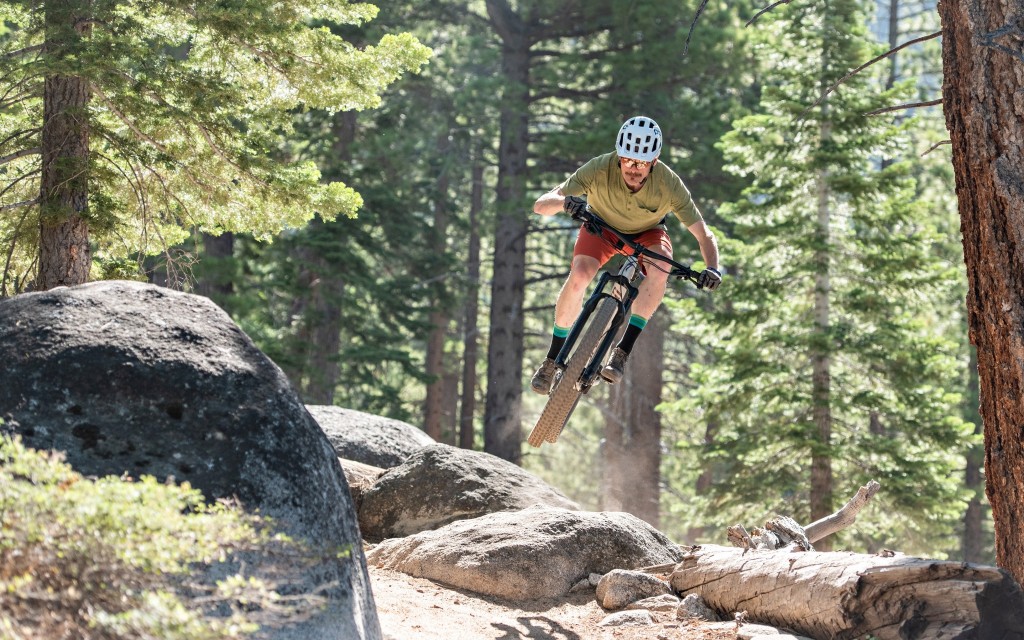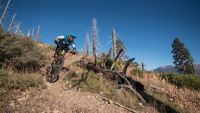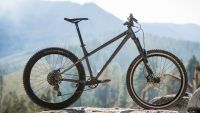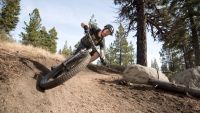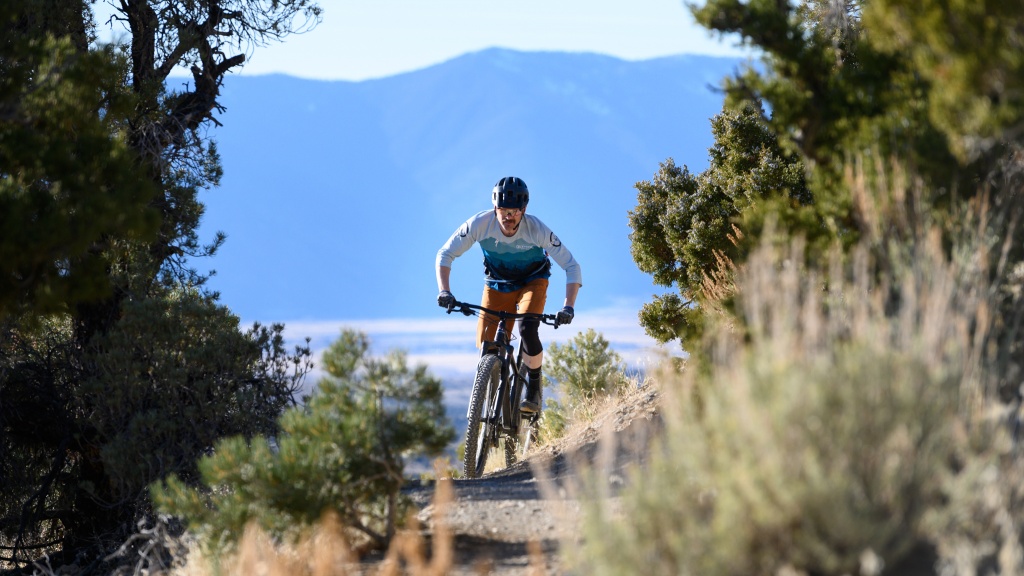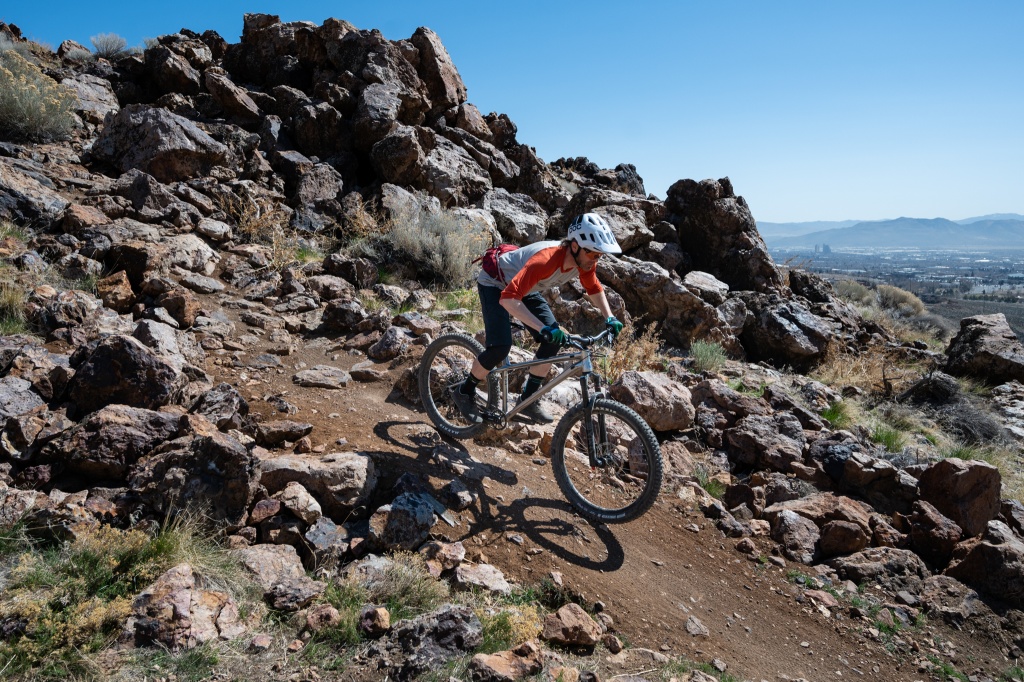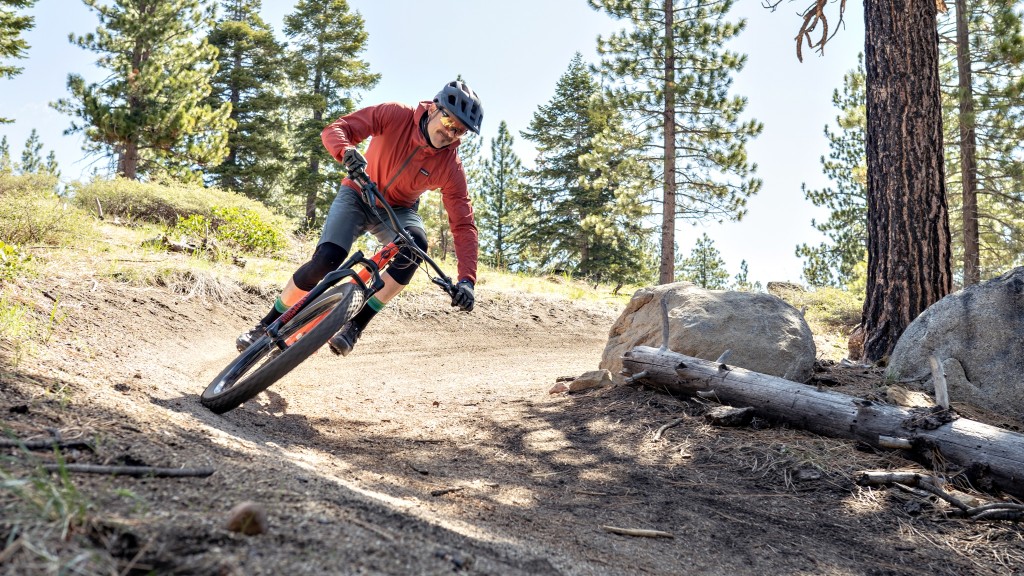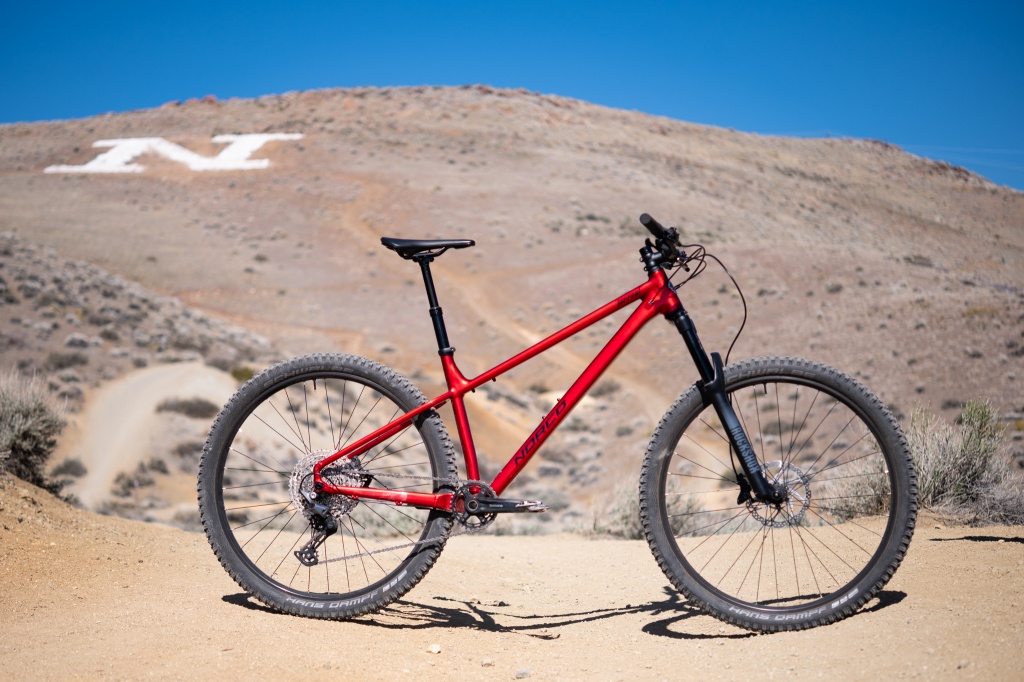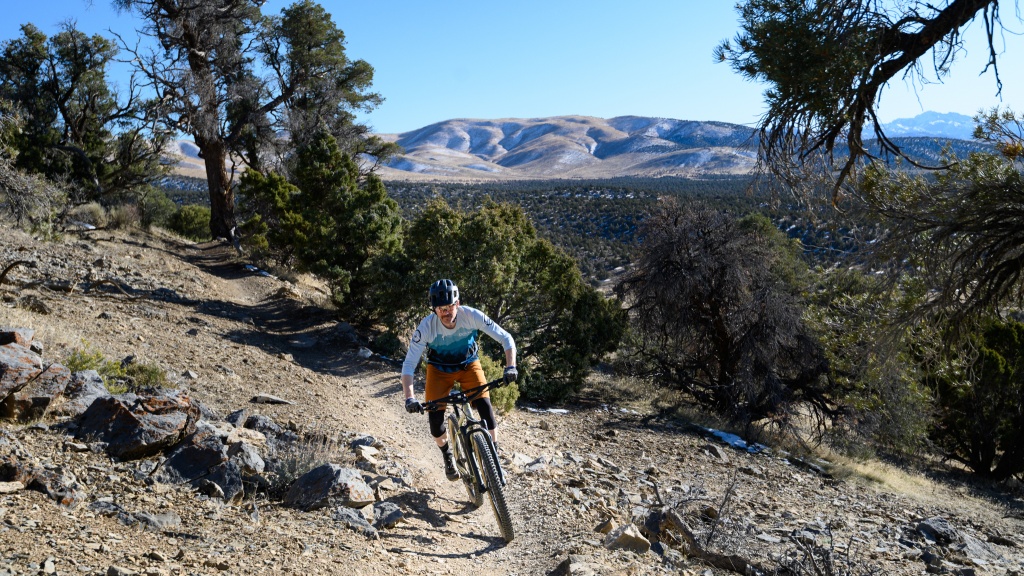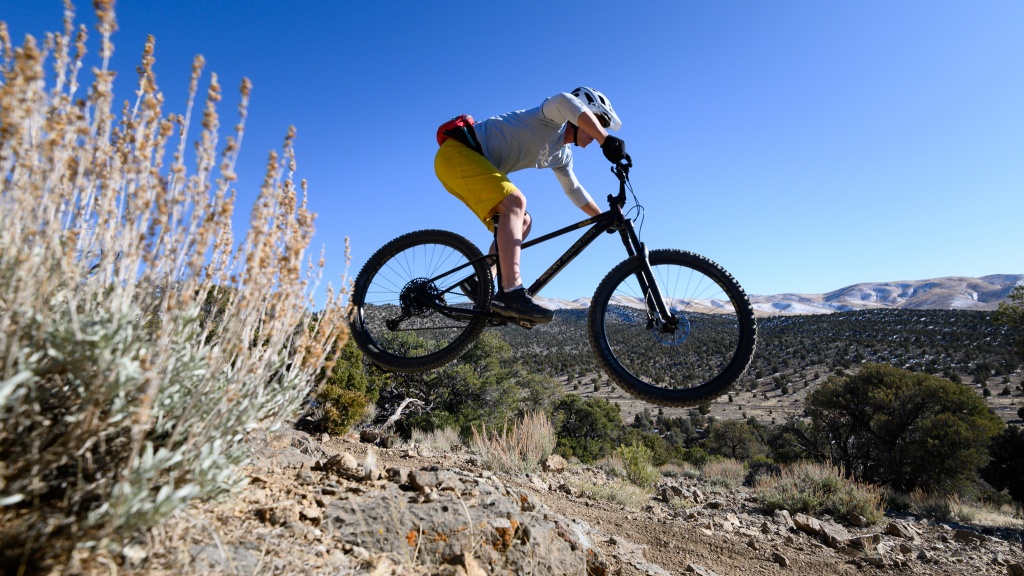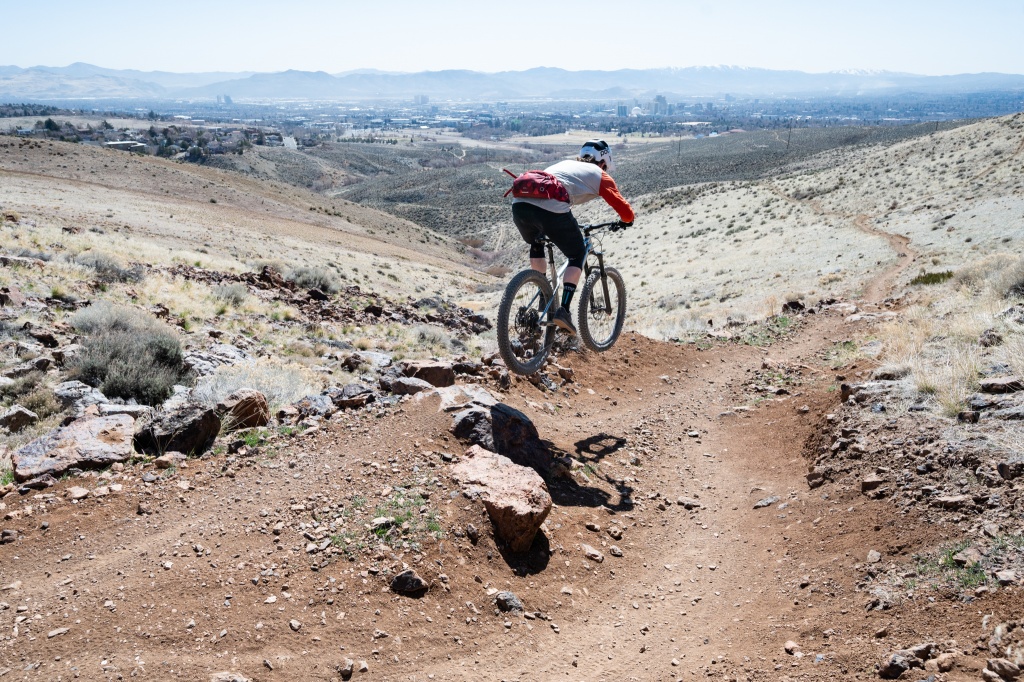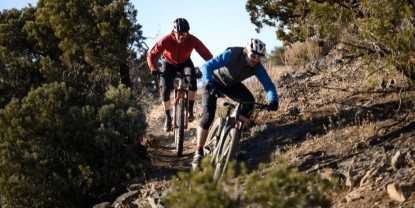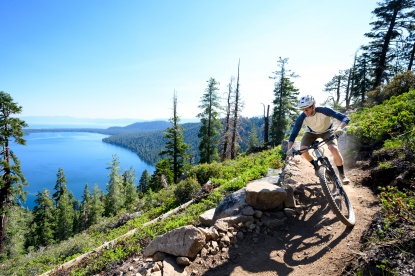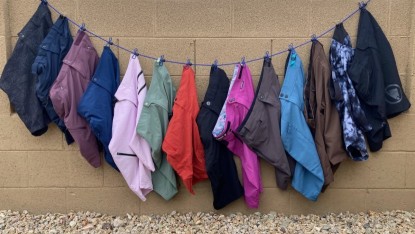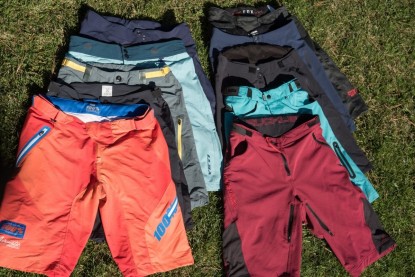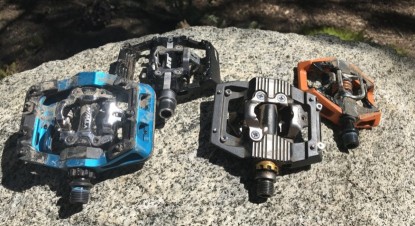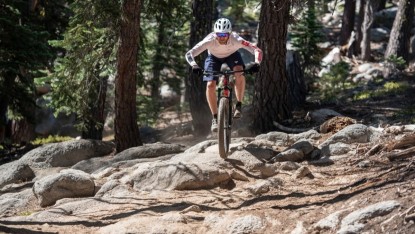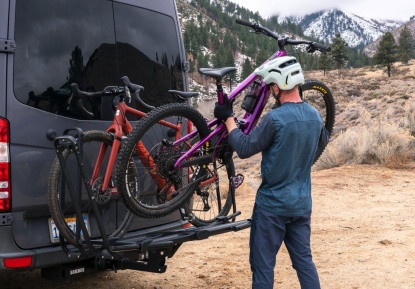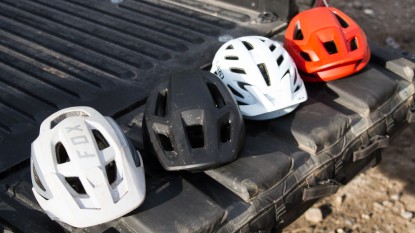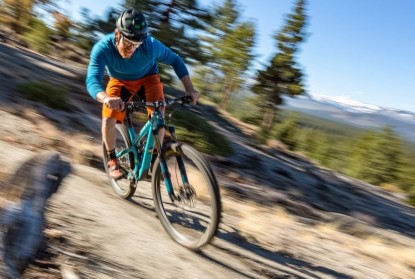Are you searching for the best hardtail mountain bike? After researching the best new models on the market, we purchased 7 for this comparative analysis. Hardtails may not be as flashy as their full-suspension brethren, but they are preferred by many riders and are typically significantly less expensive. Modern geometry, technology, and components have made hardtails better than ever before, plus they are simple, low maintenance, and cost-effective. We spent an insane amount of time riding the bikes in this review to gain a thorough understanding of the strengths and weaknesses of each model. This review will help you find the best hardtail mountain bike for your riding style, budget, and local trails.
Our team of riders test a wide variety of mountain bikes every season. From fantastic budget options to the best mountain bikes on the market, we purchase every bike we test and put in the trail time to help you find the best bike for your needs. We've also tested the best in mountain bike gear to help you flush out your kit.| Awards | |||||
|---|---|---|---|---|---|
| Price | $2,150 List | $1,999 List | $1,899 List | $3,499 List $2,624 at Backcountry | $2,099 List |
Overall Score  |
|||||
| Star Rating | |||||
| Pros | High value, fun on a wide range of terrain, dialed geometry | Solid value, mostly well spec'd, versatile geometry, 27.5-inch wheels help keep it maneuverable and playful | Aggressive geometry, built to last, killer tires | Swift climbing, sharp handling, excellent value | Aggressive geometry, fast and stable, Deore 12-speed drivetrain |
| Cons | Poor fork specification, less compliant frame compared to outgoing model | A little bland on mellow trails, SRAM SX Eagle drivetrain | May be overkill for riders/trails, sluggish in tight spaces | Not as fun on rough trails, 11-speed drivetrain | Several notable weak points of the build, aggressive geometry feels a little out of place on mellow terrain |
| Bottom Line | A stellar hardtail that is tremendously fun, versatile, and a solid value | An aggressive yet unapologetically fun and playful 27.5+ hardtail that is a blast to ride on a huge range of terrain | An aggressive hardtail with the DNA of an enduro bike that comes alive as speeds increase | A swift-climbing hardtail that could serve as a daily driver or a cross-country race bike | A hardcore hardtail that craves speed and aggressive terrain but is held back by some weak parts of its build |
| Rating Categories | Specialized Fuse Ex... | Commencal Meta HT A... | Rocky Mountain Grow... | Ibis DV9 NX | Norco Torrent A1 HT |
| Fun Factor (25%) | |||||
| Downhill (30%) | |||||
| Climbing (30%) | |||||
| Build (15%) | |||||
| Specs | Specialized Fuse Ex... | Commencal Meta HT A... | Rocky Mountain Grow... | Ibis DV9 NX | Norco Torrent A1 HT |
| Wheel Size | 29" | 27.5"+ | 29" | 29" | 29" |
| Weight (w/o pedals) | 29 lbs 14 oz | 30 lbs 4 oz | 31 lbs 3 oz | 26 lbs 8 oz | 31 lbs |
| Frame Material | Aluminum | Aluminum | Aluminum | Carbon | Aluminum |
| Frame Size Tested | Large | Large | Large | Large | Large |
| Available Sizes | XS, S, M, L, XL | S, M, L, XL | S, M, L, XL | S, M, L, XL | S, M, L, XL |
| Fork | RockShox 35 Gold RL, 130mm | RockShox Yari RC, 160mm | RockShox 35 Gold RL | Fox Float Rhythm 34 | RockShox 35 Gold RL |
| Wheelset | Specialized Stout Alloy SL, 29mm ID | Spank Oozy 395+ rims with Formula hubs | WTB ST i30 TCS 2.0 rims with Shimano MT400 hubs | Ibis Hubs, Ibis 938 Alloy rims | Stans Flow D rims with Shimano hubs |
| Front Tire | Specialized Butcher Grid, Gripton, 2.6" | Maxxis High Roller II EXO, 27.5" x 2.8" | WTB Vigilante TCS Light High Grip 2.6" | Schwalbe Hans Dampf 2.6" | Schwalbe Hans Dampf 2.35" |
| Rear Tire | Specialized Purgatory Grid, Gripton, 2.6" | Maxxis Rekon EXO, 27.5 x 2.8" | WTB TrailBoss TCS Light Fast Rolling 2.6" | Schwalbe Nobby Nic 2.6" | Schwalbe Hans Dampf 2.35" |
| Shifters | SRAM NX Eagle | SRAM SX Eagke | SRAM NX Eagle | SRAM NX 11-speed | Shimano Deore M6100 12-speed |
| Rear Derailleur | SRAM NX Eagle | SRAM SX Eagle | SRAM GX Eagle 12-speed | SRAM NX 11-Speed | Shimano Deore M6100 12-speed |
| Crankset | SRAM NX Eagle DUB | SRAM X1 1000 Eagle, 170mm | SRAM SX Eagle 30T | SRAM NX 30T | Shimano Deore 32T |
| Bottom Bracket | SRAM DUB Threaded | SRAM DUB Threaded | SRAM BSA DUB | SRAM GXP XR | Shimano BSA Threaded |
| Cassette | SRAM NX 11-50T | SRAM PG-1210 11-50T | SRAM PG-1210 11-50T | SRAM PG 1130 11-42T | Shimano Deore 12-speed 10-51T |
| Saddle | Specialized Bridge Comp | Fabric Scoop Flat Sport | WTB Volt Race 142 | WTB Silverado 142 | Fi:zi'k Taiga |
| Seatpost | TranzX dropper 150mm travel 34.9mm diameter | KS Rage-I | Rocky Mountain Toonie Drop | KS E30i Dropper | Tranz-X YSP18 150mm |
| Handlebar | Specialized Stout Riser 780mm | Ride Alpha R27 | Rocky Mountain AM 780mm | Ibis 780mm Alloy | 6061 Alloy, 800mm, 18mm rise |
| Stem | Specialized Stout | Ride Alpha Freeride 40 | Rocky Mountain 35 AM | Ibis | 6061 Alloy, 50mm, 35mm clamp |
| Brakes | SRAM Level TRL | SRAM Guide T 4-piston | Shimano MT420 4-piston front, MT400 2-piston rear | SRAM Level | Shimano MT420 4-piston |
| Grips | Specialized Trail | Ride Alpha DH | Rocky Mountain Lock-on Light | Lizard Skins Charger Evo | VP Lock-on |
| Warranty | Lifetime | Five Years | Five Years | Seven Years | Five Year Limited |
Best Overall Hardtail Mountain Bike
Specialized Fuse Expert 29
The Specialized Fuse continues its reign of dominance in the hardtail mountain bike category. For the 2020 model year, this bicycle received a total overhaul, and it shreds harder than ever with 29-inch wheels. This bicycle does it all; it is a respectable climber, has a high-fun factor, descends well on a wide range of terrain, and wears a relatively solid build kit. Specialized delivered well-balanced geometry, and this bike now runs 29 x 2.6-inch tires, which deliver a precise and fast ride. Better yet, the Fuse is a solid value with an impressive price point and largely stellar build kit. We love it, and we think you will too.
The Fuse isn't perfect. While the build kit is mostly dialed, the RockShox 35 Gold fork leaves a bit to be desired. The fork needed service immediately after purchase. Upon dropping the lower legs, we found that the fork had essentially no oil in it, and the seals were near bone dry. Once rebuilt, it felt marginally better. Otherwise, there was little not to like about this capable and highly versatile hardtail.
Read more: Specialized Fuse Expert 29 review
Best Hardtail to Serve As A Trail and Cross Country Bike
Ibis DV9 NX
The Ibis DV9 is a lightweight bicycle that can slay a trail ride and is just as well suited to entering a cross country race. This bike has relatively upright, conservative, cross-country-oriented geometry. This bike prioritizes pedal efficiency and quick handling over downhill prowess. The result is tremendous climbing efficiency, zippy acceleration, and razor-sharp steering. The NX build we tested is budget-oriented, but Ibis didn't skimp where it matters with a great fork, tires, wheels, and dropper post that enhance its all-around performance. This bicycle is a great choice for the rider who wants a versatile hardtail and frequently rides primarily smooth and flowy trails.
The downside? The DV9 isn't the best choice for riders who ride rough or chattery trails. The lightweight carbon fiber frame translates a lot of the trail surface to the rider. When you're motoring over choppy terrain, you can definitely feel it. As a result, this bike is best piloted by experienced riders who can use proper form and soften their elbows and knees to finesse downhill.
Read more: Ibis DV9 NX review
Best Aggressive Hardtail
Rocky Mountain Growler 50
The Rocky Mountain Growler craves high speeds and rowdy terrain. This hardtail has super-aggressive geometry that is typically found on squishy enduro race bikes. This long bicycle is insanely stable at high speeds and has the angles to feel exceptionally confident on steeper terrain. The Growler responds well to an aggressive pilot and, despite its length, likes to boost off rolls and bumps in the trail. The build kit was highlighted by some meaty 2.6-inch WTB tires that have a hard-charging attitude to match the Growler's outlook on life. Climbing up mellow and buff climbs was surprisingly pleasant, thanks to a steep seat tube angle that puts you right on top of the cranks. If you are the kind of rider who enjoys getting rad and going fast, this is a great bike.
The Growler does have some noticeable shortcomings. We found technical climbing to be less than ideal, despite the impressive ability to climb mellow grades. The combination of the long wheelbase and super-slack front end makes it more difficult to handle in tight spaces, resulting in a slightly awkward feeling. Even on the descent, tight corners and awkward maneuvers can be more stressful than hitting the downslope on a shorter, steeper bike. Additionally, the build kit was a bit of a mixed bag. The Rocky Mountain Toonie dropper post failed on us but was replaced quickly under warranty. Also, the brakes are slightly too weak for how hard this bike wants to charge. Aside from that, there was little not to like about this hard-charging hardtail.
Read more: Rocky Mountain Growler 50 review
Best For Fun-Loving Riders
Commencal Meta HT AM Essential
The Commencal Meta HT AM really knocked our socks off during testing and was a blast to ride in virtually all situations. The versatile hardtail rolls on 27.5+-inch wheels and tires and charges hard in aggressive terrain and is super playful and fun-loving. Its geometry is aggressive enough to be stable at speed and confidence-inspiring on gnarly trails, yet it's not so long or slack that it becomes a handful at lower speeds or in tighter terrain. The 27.5-inch wheels and moderate reach and wheelbase also help to give the bike an eagerness to get off the ground, manual dips in the trail, and slap some corners. It's also a comfortable and relatively efficient climber that seemed to encourage our testers to get out of the saddle and stay on the gas. Commencal's consumer-direct sales model means that you get a lot for your money, and the Essential build we tested blows the doors off most other bikes in this price range.
Given its plus-sized tires and relatively slack front end, the Meta HT AM isn't the zippiest or most efficient hardtail in the world. Those big ol' tires do provide a nice damp ride feel, but they aren't the fastest rolling, and this bike can feel a little boring on mellower trails and terrain. That said, this isn't intended to be an XC bike, and we think most people riding the Meta HT will probably be having too much fun to care. We were truly impressed by this bike, and we feel it would be a great addition to anyone's bike quiver, or as a low-maintenance daily driver.
Read more: Commencal Meta HT AM Essential review
Best For Versatility and Adventure
Marin Pine Mountain 2
The Marin Pine Mountain is a versatile steel hardtail that does it all. This rig was clearly designed with an emphasis on bikepacking. The frame has a lot of mounts, and the steel construction creates a smooth and damp ride. The pedaling position is rock-solid, and the Pine Mountain is a surprisingly competent climber. While this bike clearly prefers adventure rides, it holds up quite well on the average after-work trail ride. The middle-of-the-road geometry avoids being too long and slack or too steep and twitchy. It descends confidently, corners well, and scoots back up the hill surprisingly fast. Oh yeah, the build kit is rock solid given the price with highlights like a Shimano SLX 12-speed drivetrain and 4-piston brakes.
The Marin is a bikepacking/adventure bike that holds up pretty well as a trail bike. It should be noted that there are much better options for riders looking for a hardtail mountain bike for daily trail riding duties. As a trail bike, the Pine Mountain is a little bland, dull, and never stands out as particularly impressive. The beauty of this bike is in its versatility and can-do attitude, not its trail riding prowess.
Read more: Marin Pine Mountain 2 review
Compare Products
Why You Should Trust Us
Our testing process is extremely tedious, focusing on all the details. Oh yeah — it's also quite fun. Rest assured, we put these bikes through the paces in our lab and, more importantly, on the trail. We spend time carefully measuring each bicycle with our own tools and processes to see if the manufacturers differ significantly from our measurements.
Next comes the fun part. Each tester takes each bike on multiple test rides. We test these bikes on trails we are extremely familiar with. This familiarity means we ride the same exact lines on each bike and can easily discern between the ride properties of each model. Our test rides are not quick, 25-minute, hot laps. They are substantial, multi-hour rides.
We also do switchout days where were jump on bikes back to back in quick succession. This is an extremely important element of our testing process. Riding different bikes on the same trail, one after another, makes the relative differences and strengths and weaknesses extremely apparent.
Pat Donahue, our former Senior Mountain Bike Editor at OutdoorGearLab, leads our hardtail review. Pat has ridden well over 150 bikes in the past 15 years. While he has spent several years on downhill and enduro race tracks, he prefers to just go out and ride. He is joined by professional skier, singletrack enthusiast, and bike mechanic Kyle Smaine; our Senior Mountain Bike Review Editor, Jeremy Benson, and bike industry veteran, Joshua Hutchens, who has done everything from owning and running his own shop in Oregon to guiding around the world since his early days on a BMX bike.
Is a Hardtail Mountain Bike Right for You?
Mountain bikes are expensive. In fact, mountain bikes can get really expensive really quickly. Every model year, the prices seem to creep higher and higher as new technology is introduced.
Hardtail mountain bikes certainly have an appeal. The price tag will be the first thing that catches your eye. The lack of a rear suspension linkage and shock makes these bikes less expensive to produce and easier to maintain. Hardtails are an excellent option for newer riders to build skills as they force proper form and soft knees/elbows over rough terrain. Also, hardtails can be solid second bikes for full suspension owners who want a simple, hearty bike for wet and sloppy conditions. It's not all sunshine, though. Riding hardtail means you have a far narrower range of trails you can ride comfortably. Additionally, they provide a far less forgiving ride by more directly translating the trail surface to the rider's body.
An entry-level full-suspension bike generally sells for somewhere in the neighborhood of $2,000. Reasonably well-equipped bikes will usually start above $3,000. If you ride regularly, all of the bearings and pivots on these full suspension bikes require maintenance to keep them running smoothly and quietly. This maintenance will likely run you a few hundred dollars a year. The enormous upside to full suspension bikes is they offer far superior performance in almost every area of the trail compared to hardtails. Great climbing traction, far more aggressive descending abilities, and all-day comfort are all benefits of full-squish rigs. Riders who intend on getting into mountain biking for the long haul will typically benefit from dropping the extra coin for some rear suspension.
Which is right for you? Taking a look at your goals is essential.
If you're hoping to head out on a relaxing ride once a week on mellow terrain with very few technical features, a hardtail is a solid choice. Beginners looking to build their skills are also great candidates for these bikes. If you're in this camp, know that mountain biking can potentially be more fun on a full-suspension bike. Riders who want to ride a wide range of trails should strongly consider rear suspension. If you're going to ride multiple times a week and push your skillset, a full suspension bike is often the best option.
Some riders simply prefer the simplicity and efficiency of a hardtail. They have fewer moving parts, often weigh less, and you'll never lose energy through rear suspension movement. The added challenge of riding without the crutch of rear suspension appeals to many riders as well. It's really about personal preference. So, whether you're just starting out or you've been riding for decades, there are more styles of hardtail mountain bikes on the market than ever before, and something sure to match any rider's needs and budget.
Value
If the price tag associated with a quality mountain bike has you choking, look no further! Hardtails are typically a pretty good value compared to their full-suspension counterparts. We don't rate the bikes we test based on their price, but we do love a good value. Bikes such as the Commencal Meta HT AM Essential represent what we believe to be an excellent value with a fair price for a quality build kit thanks to their consumer-direct sales model. Bear in mind that there are typically several build options available, so riders can often spend more or less money on a given bike model.
Wheel Size
Modern hardtails typically have one of four common wheel sizes. Each wheel size has strengths and weaknesses.
- 27.5 — Great for those who want a quick and playful ride. These are the smallest wheels that are being widely produced. These ninja-like wheels produce a quick, agile, and playful ride. These may be better suited to smaller riders or for experienced riders who are skilled pilots.
- 29 — Best for those who want to ride fast. As they say, big wheels keep on rollin'. These larger diameter "wagon wheels" roll very fast, carry loads of momentum, and stay out of holes in the trail. It's harder to disturb the momentum of these big wheels. You sacrifice a bit of agility compared to 27.5-inch wheels. These are the best choice for those concerned about speed and covering ground.
- 27.5+ — 27.5+ wheels run 27.5 x 2.8 or 27.5 x 3.0 wheels. These deliver boatloads of traction. In addition, you can run these tires at much lower pressures, and they add an element of cushion or damping to the ride. This can be extremely important on a hardtail.
- 29+ — A few bikes run 29+ wheels. This runs a 29 x 3.0 or 29 x 2.8-inch tire. These are really, really big wheels that deliver insane stability and roll very fast. These are great wheels for exploring and maybe a bikepacking mission. Given the sheer mass of these tires, acceleration is not a strong suit, and they can feel quite clunky in tight spaces. In addition, they are about as far from playful as you can get
Note: Tire choice can make a massive difference within a wheel size — for example, a 29 x 2.3-inch tire rides very differently than a 29 x 2.6-inch tire. Adding a bit of width can make for a more aggressive feel and provide a bit of damping.
Carbon Fiber vs. Aluminum vs. Steel
Frame material is important. Each frame material has inherent strengths and weaknesses that can have an enormous effect on performance and price. Your budget will largely dictate frame material, but here is a brief rundown of the strengths and weaknesses of each material.
- Carbon Fiber — The lightest, stiffest, and strongest option. It's also one of the more expensive materials. Carbon fiber transmits your power and body movements most effectively. The stiff ride is responsive, and the lower weight is a huge bonus. Carbon fiber ages well, meaning it retains its integrity better than aluminum, which weakens over the years. It is also the strongest of the frame materials. The catch, while carbon fiber is extremely strong, it doesn't stand up well to being crashed into rocks. Also, it isn't eco-friendly as it has no way of being recycled.
- Aluminum — This reliable metal is less expensive and doesn't age as well as carbon fiber. While aluminum is not as stiff as carbon fiber, it responds better to getting dropped in rocks. Additionally, it typically isn't quite as unforgiving as carbon fiber, which results in minor amounts of frame flex. No big deal. This flex can work in your favor by softening the harsh feel of a hardtail. This material is easily recyclable.
- Steel — Some hardtail bikes, particularly from smaller manufacturers, are built with steel. Steel is less stiff than carbon fiber and aluminum, resulting in a bit of frame flex. The upside? It provides a more damp ride than the other materials. Additionally, steel can be repaired if a weld fails.
Geometry
Hardtails are typically associated with a more old-school ride feel and this is related to their rigid rear ends and frame geometry. Modern mountain bike geometry trends are slowly but surely making their way into the design of hardtail mountain bikes, and there are currently more different styles of hardtails on the market than ever before. Brands have been diversifying their frame geometries to achieve different ride characteristics. Nearly all hardtails are efficient climbers due to their lack of rear suspension, although there are differences in uphill handling based on the length of the wheelbase and reach as well as the head tube angle.
These days you can get a quick-handling carbon fiber framed model with a middle-of-the-road geometry, like the Ibis DV9, which is lightweight, efficient, fast-rolling, and eats up miles and vertical like it's its job. In the case of the DV9, it's a versatile trail-worthy bike that could easily double as an XC race bike on the weekends. Moderate geometries lend themselves well to versatility, and bikes like the Specialized Fuse are great examples of this. The Fuse is very well-rounded, and it performs impressively well in virtually all situations. You'll also find models with more conservative geometry, like the Marin Pine Mountain, to be better for less aggressive trail riding and well suited to bike packing and adventure riding.
On the other end of the spectrum, we now have companies bringing long and slack to the designs of their hardtail frames. The terms aggressive and enduro haven't been associated much with hardtail mountain bikes until more recently as brands like Rocky Mountain and Norco have started producing hardcore hardtails. These bikes have slack, 64-degree head tube angles, long reach, and wheelbase measurements, and they come to life at speed and handle steep and rough descents impressively well. Similarly, the Commencal Meta HT AM has a slack head angle and a 160mm fork that give this bike the ability to get rowdy, yet its moderate reach and wheelbase keep it maneuverable and fun-loving.
Conclusion
There you have it, our comprehensive review of the best hardtail mountain bikes. There are plenty of reasons to buy a hardtail over a full-suspension mountain bike. These less forgiving bicycles teach proper form and technique, as there is no rear suspension to bail you out. In addition, the lack of rear suspension requires far less maintenance than a complicated full-suspension bike with a ton of creaky bearings, and they tend to be more affordable for the masses. Oh yeah, they are also really fun.
The Specialized Fuse is our favorite hardtail mountain bike. The Fuse is incredibly fun, and it offers balance and well-rounded performance. The Ibis DV9 is a no-brainer for riders who value a light and efficient hardtail. The Ibis climbs like the wind and relies on its razor-sharp handling to slice and dice through tricky sections of trail. The Rocky Mountain Growler dominates the descent. The Growler is one aggressive bike and is unbelievably stable at high speeds. The Commencal Meta HT AM is a fun-loving hardtail for riders who like to manual, boost, and drift their way down the trail and has the chops to handle aggressive descents. Those looking for a versatile bike that is equally at home on casual trail rides and bike packing adventures alike should give the Marin Pine Mountain 2 a look.— Pat Donahue, Kyle Smaine, Jeremy Benson, Joshua Hutchens


